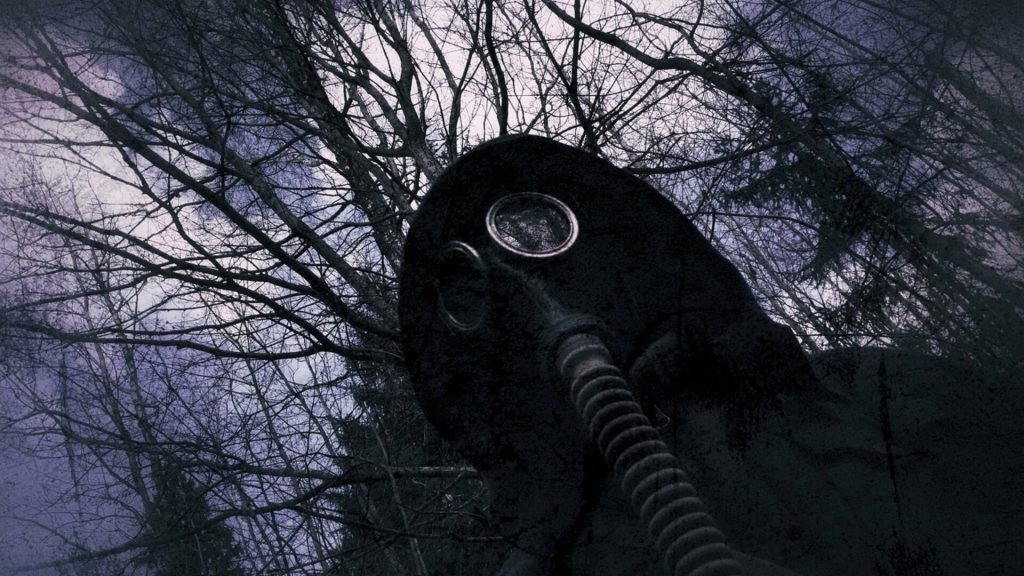A new scientific study shows that some worms living close to Chernobyl have reportedly become immune to radiation exposure. This new “superpower” of sorts has truly set the worms apart from all other animals that have mutated as a result of their forced exposure.
Biology Professor Claims ‘These Worms Live Everywhere’
Matthew Rockman, the senior author of the study, stated that “these worms live everywhere” and “live quickly.” Therefore, the species can go through “dozens of generations of evolution” while a standard vertebrate is “still putting on its shoes.”

The researchers reportedly went to Chernobyl to study what are known as “nematodes.” Nematodes are small worms that are able to reproduce rapidly and have simple genome structures.
Worms Were Collected From Soil Samples, Rotting Fruit
The researchers used handheld Geiger counters to have accurate measurements of the local radiation levels during their search. They collected various worms from rotting fruit, soil samples, and other types of organic material.

While wearing personal protective gear to keep them safe from the radioactive dust, these scientists visited locations with varying levels of radiation. Doing so allowed them to create a diverse collection of exposed worms for their study.
Researchers Froze Worms As Part Of Scientific Study
An interesting detail is that the researchers had to freeze the worms as part of their studies. These studies were conducted in the lab at New York University (NYU).

Rockman, who is also a professor of biology at NYU, confirmed that they “can cryopreserve worms and then thaw them for study later.” According to Rockman, doing so allowed them to essentially “stop evolution from happening in the lab.”
No Radiation Damage Detected On Genomes Of Chernobyl Worms
The researchers were surprised to discover that they were unable to detect any radiation damage signatures within the genomes of the worms gathered from Chernobyl. The cryopreservation undoubtedly helped with the accuracy of their study results.

Rockman explained that being able to “stop evolution” is “impossible with most other animal models.” However, when the objective is to compare animals that experienced dissimilar evolutionary histories, Rockman confirmed that this unique option for worms is “very valuable.”
Surprising ‘Superpower’ Of Worms Does Not Mean Chernobyl Is Safe
Just because the worms may have a “superpower” of sorts does not mean that Chernobyl is now a safe place to live. Dr. Tintori stated that “it more likely means that nematodes are really resilient animals.”

Tintori added that the study proves nematodes “can withstand extreme conditions.”
Length of Time Worms Were Exposed To Radiation Is Undeterminable
Dr. Tintori stated that the team was unable to determine exactly how long the worms collected were in the Zone in question. As a result, they cannot “be sure exactly what level of exposure each worm and its ancestors received over the past four decades.”

Worms can typically live between four and eight years. Their lifespan specifically depends on the climate in which they live along with nearby predators – such as rats, toads, or birds.
Researchers Used Population Growth Data To Measure Descendant Sensitivity
The researchers wanted to know exactly if the lack of genetic signatures was caused by the Chernobyl worms’ uncanny ability of repairing and protecting their DNA. They designed a system that allowed them to compare the speed of worm population growth.

They then used that data to measure the sensitivity levels of the worms’ descendants. To conduct this part of the study, they focused on each of the 20 genetically unique worms and how they were affected by varying types of DNA damage.
Study Confirms Radioactive Landscape Did Not Force Worm Evolution
One of the points that the study clearly proved was that the radioactivate landscape of Chernobyl did not force the worms to evolve with time. In addition, it suggested that the worms did not have any more tolerance of radiation than other species.

The study further highlighted the DNA repair process overall. More specifically, it focused on the fact that DNA repair needs and timelines can vary from one individual to another – regardless of species.
Tintori Claims Strains From Study Can Teach More About Carcinogen Effects
According to the researchers, the findings from the study can lead to a clearer understanding of human DNA strands and natural variation. For instance, Dr. Tintori confirmed that they now know “which strains of O. tipulae are more sensitive or more tolerant to DNA damage.”

As a result, they can use those strains and their collected data to study carcinogen effects on different people. More specifically, they can determine why different people are more likely than other people to suffer from the same carcinogens.
Study Results Could Shine More Light On Genetic Predispositions To Cancer
Another benefit from the study is that it could help scientists to learn more about why some (but not all) humans with genetic predisposition to cancer get the disease. Dr. Tintori said that this new perspective on DNA-damaging environmental agents “is something that will help us to have a clear vision of our own risk factors.”

Cancer remains a leading cause of death on a global scale. It accounted for close to 10 million deaths throughout 2020 alone. This means that an average of nearly 1 in every 6 deaths was cancer-related.
Study Author: ‘We Still Don’t Have A Great Grasp’ On Chernobyl Effects
Dr. Sophia Tintor, the lead author for this scientific study, stated that Chernobyl was “a tragedy of incomprehensible scale.” She added that they “still don’t have a great grasp on the effects of the disaster on local populations.”

Tintor asked if the “sudden environmental shift” selected species that were “naturally more resistant to ionizing radiation.” If not the entire species overall, she noted that it could just apply to specific individuals within a certain species.
Chernobyl Power Plant Explosion Led To Radioactive Material Leaks
An explosion occurred at the Chernobyl power plant in 1986 within Pripyat, a town that was part of the former Soviet Union. The explosion was reportedly caused by a fire located in a nuclear reactor.

The area surrounding the power plant was evacuated, which left nearly 116,000 permanently displaced from the area within the exclusion zone.
Many Believe That The Region Should Be Exclusively Used For Animals
Many critics and citizens alike believe that the Chernobyl region should be surrendered to the animals that have made it their home over the years. Radiation levels are still too high in the area for humans to live there.

Wildlife has basically covered the 1,600 square mile region for years now. The animal population there continues to grow.
Chernobyl Is Not A Wasteland, Diverse Wildlife Thrives In The Area
The Chernobyl disaster occurred over three decades ago. Just because humans are not able to live there does not mean that the wildlife will have to leave.

There is a wide range of different animal species throughout the area. For instance, there are reportedly deer, horses, boars, mice, lynx, wolves and many other species present and prevalent.






